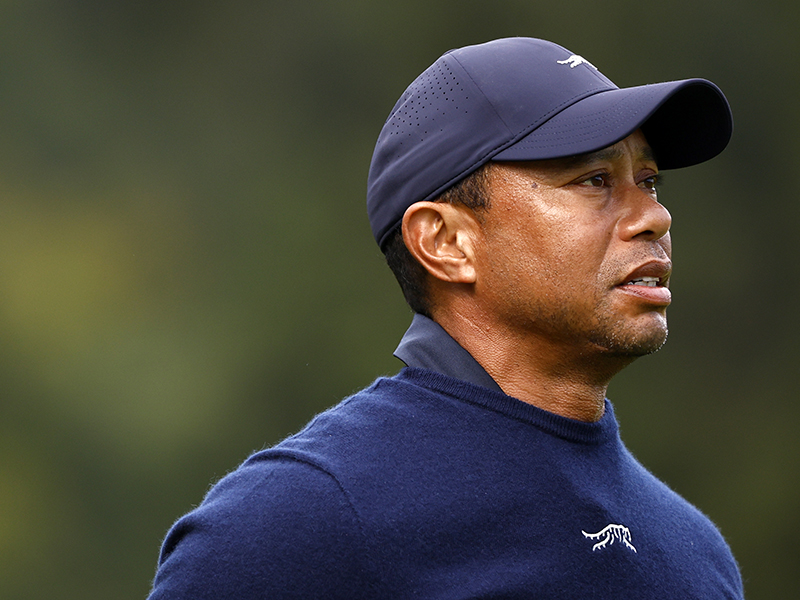How Does The Official World Golf Ranking Work?
The Official World Golf Ranking is a technical subject, and can be confusing, so we summarised everything you need to know...

After some major changes to the Official World Golf Ranking system this year, you could be easily forgiven if you find the whole thing a bit confusing. In this article, we outline everything you need to know...
What is the Official World Golf Ranking system?

The Official World Golf Ranking (OWGR) is a system for rating the performance level of professional golfers, with players accumulating points over a two year rolling period to determine their ranking in the OWGR.
To summarise, a golfer's World Ranking is given by dividing their points total by the number of events they have played. This creates an average score, which is used to rank players.
In order to place additional emphasis on recent performances, points awarded for each tournament are maintained for a 13-week period.
Ranking points are then reduced in equal decrements for the remaining 91 weeks of the two year ranking period, and each player is then ranked according to their average points per tournament, by dividing their total number of points by the number of tournaments they have played in.
How does a player earn Official World Golf Ranking points?

In order to qualify for a ranking, a player must play a minimum of 40 tournaments a two year rolling period. OWGR points have been the topic of many debates recently, after LIV Golf's request for its players to earn ranking points was rejected.
Currently, players need to play on one of the leading professional Eligible Golf Tours, of which there are 23, to receive World Ranking Points. As LIV Golf is not recognised as an Eligible Golf Tour, they are not able to receive ranking points.
Get the Golf Monthly Newsletter
Subscribe to the Golf Monthly newsletter to stay up to date with all the latest tour news, equipment news, reviews, head-to-heads and buyer’s guides from our team of experienced experts.
Major Championships, Olympic Golf Competitions, and the World Cup of Golf are also all eligible for World Ranking Points - team events aren't, however.
New rankings are produced each week, though a player's recent improvement in form still might not propel them up the rankings, because the previous two years are taken into account.
Each player in the OWGR system will have a Strokes Gained (SG) world rating based on their scores in stroke-play events, which is adjusted for the relative difficulty of each round they play.
A player's SG world rating dictates the number of performance points a player brings into a tournament, with the sum of all golfers' points determining the event's field rating - replacing the strength of field metric currently used.
Fields will therefore be evaluated by the skill level of every player involved, rather than just the world's top-200 as it was previously, with all players making the cut in an event now receiving ranking points.
What are the recent changes to the Official World Golf Ranking system?

Some recent changes, brought in on 1st January 2024, have seen a larger percentage of points awarded to the highest finishers in limited-field events. This means that the winner of the PGA Tour's signature events will now see a 21 percent allocation of ranking points available for that tournament, as opposed to the previous 17 or 18 percent.
In addition to this, in no-cut events, ranking points will not be awarded to the bottom 15 percent of the field. Multiple winners in a calendar year will also benefit from the new rule changes, with a multi-win boost seeing the potential points earned increase by 60 percent for a two-time winner and 70 percent for a three-time winner.
Official World Golf Ranking Records

The Official World Golf Ranking started in 1986, with Bernhard Langer earning the title as the World Number One for the first time.
In 35 years of the ranking, only 25 players have ever made the top spot.
Tiger Woods has spent the most consecutive weeks (281), and the most total weeks (683), as the World Number One.
Tiger Woods became the youngest player to become the World No. 1 in 1997, when just 21 years and 167 days old.
Woods has spent 906 weeks in the top-ten of the Official World Golf Ranking, while Ernie Els spent 788 weeks, and Phil Mickelson 775.
Phil Mickelson has spent 270 weeks at No. 2 without ever rising to the top ranked player in the world - next man on the list Jim Furyk spent 39 weeks in second for comparison.
Tom Lehman has spent the lowest amount of time at the top, with just one week in April 1997.
Three golfers have spent an entire year at World No. 1: Nick Faldo in 1993, Greg Norman in 1996, and Tiger Woods in 2000, 2001, 2002, 2003, 2006, 2007, 2008, and 2009.
Luke Donald and Lee Westwood are the only two players to become World No. 1 who haven't won a Major in their career.
Vijay Singh is the oldest player to have held World No. 1 status, when he was 42 years and 93 days old. Singh was 46 years and 140 days old when he was last in the top-ten of the OWGR, making him the oldest player to be there.
Sergio Garcia was just 20 years and 7 days old when he became the youngest ever player to enter the top-ten in 2000.
Ryan has worked as a junior staff writer for Golf Monthly since 2021.
-
 RBC Heritage Prize Money Payout 2025
RBC Heritage Prize Money Payout 2025Scottie Scheffler defends his title at Harbour Town in the latest of the PGA Tour’s signature events
By Mike Hall Published
-
 The Last Time Rory McIlroy Won A Major (Prior To The 2025 Masters)....
The Last Time Rory McIlroy Won A Major (Prior To The 2025 Masters)....We wind the clock back to the year 2014, when Rory McIlroy was the heir-apparent to Tiger Woods
By Michael Weston Published